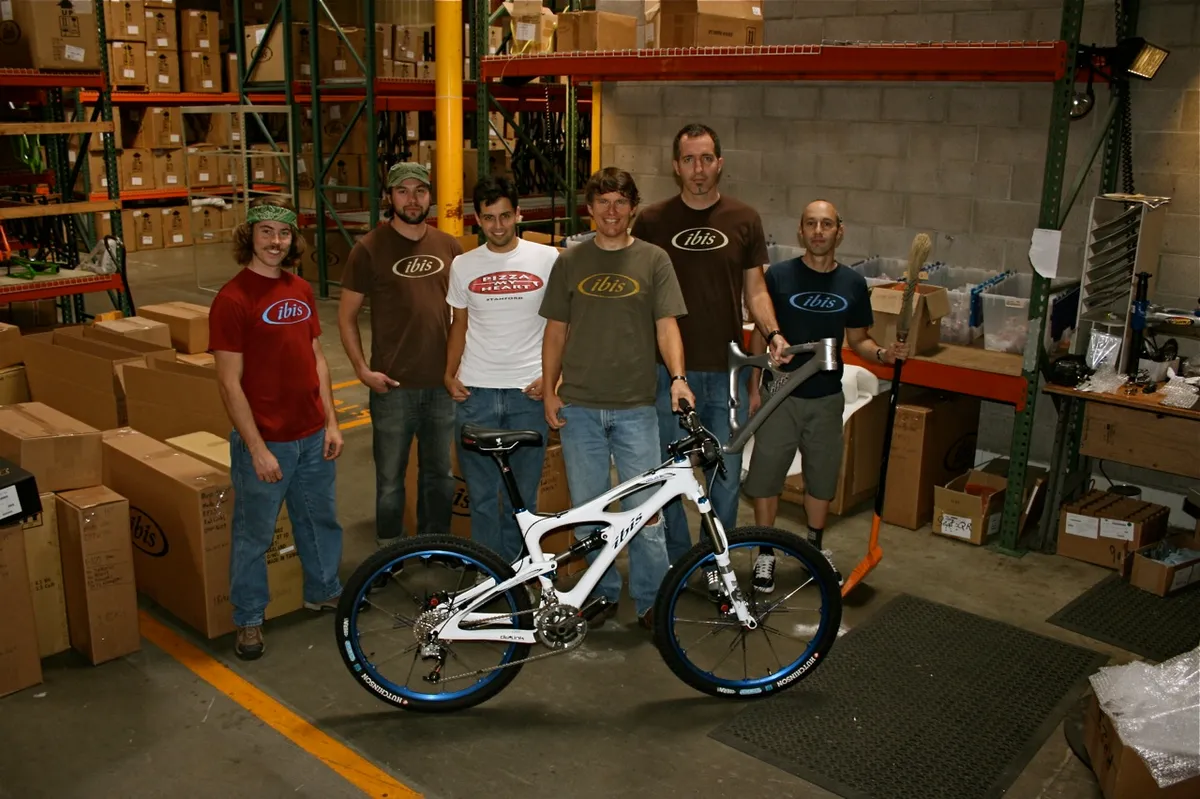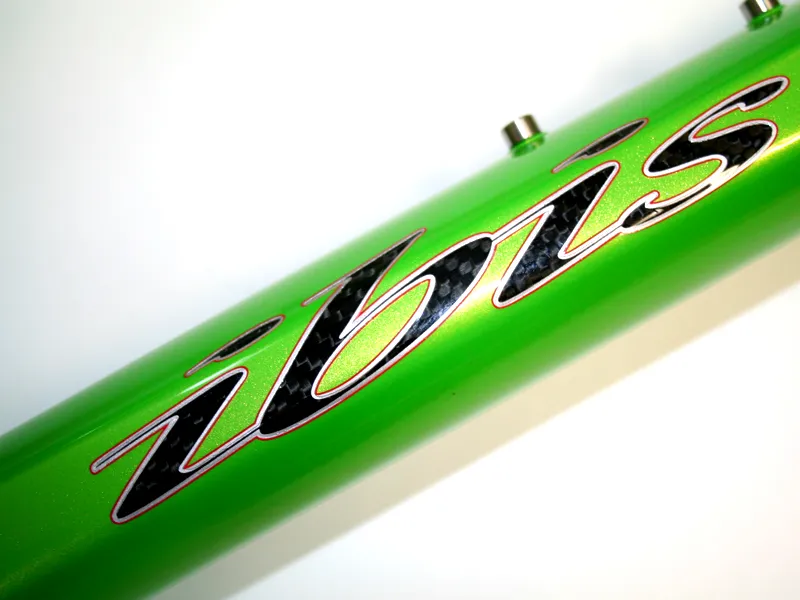California-based Ibis Cycles go back to 1982, when founder Scot Nicol realised his apprenticeship under mountain bike pioneers Charlie Cunningham (WTB) and Joe Breeze could translate into a viable business.
The iconic brand hit a rocky patch in the late Nineties but has now been reborn, thanks to the arrival of industry veterans Hans Heim and Tom Morgan.
BikeRadar sat down with Heim, 48, and Morgan, 42, at their warehouse in Santa Cruz to talk about bikes, Ibis 2.0 and Brian Lopes.
BikeRadar: You both come from a solid background of industry experience: Specialized, Giant, Santa Cruz, Bontrager, Answer and Titec. What made you jump in feet-first with Ibis?
Hans: I was mid-flight with Santa Cruz Bicycles back in 2003 when my partners decided they wanted to take over the business. At that time I was working on a whole different way of developing bikes – taking care of the mechanical aspects while focusing heavily on the industrial design. Most bikes are designed mechanically first, then dressed up to look good later. It was something I originally wanted to do with the [Santa Cruz] Blur.
I had a two-year non-compete [agreement] with Santa Cruz when I left in 2003. I was wondering what I would do next. I called Scot to find out what the company was doing because I heard it was bankrupt or something. He told me some attorneys owned the trademarks, so I called them and worked out a deal, and got Scot involved again. I also reached out to Tom, who I worked with during our Bontrager and Titec days. He was at Giant at the time.
Tom: Titec was a supplier to Santa Cruz when Hans worked there.
Hans: Tom and I spent time preparing the company after he left Giant.
Tom: I grew up in Northern California, so this was a good fit. It was also a good opportunity to become a partner in a company, after adding value to several companies over the years.
Hans: It's cool to do things for yourself; if there's a problem, there's nothing in between you and the solution other than your own time and energy. We can't complain!
Tom: The combination of what we bring to the table balances nicely.
Ibis 2.0 is entering its fifth year since you guys got involved with Scot. What have been the highlights and low periods?
Hans: It's amazing: there are three people here who could run the company, and we share our experiences openly. This crew has worked for plenty of great companies, and we've learned from our mistakes.
Tom: Sometimes too much experience stands in the way of progress; we focus on solutions and different ways of doing things.
Hans: Everyone here is okay with doing things that are really hard. We tackle the hard stuff first and savour the good stuff second. We thought we had to have a killer product, and after talking to several people, determined carbon fibre was the key to Ibis 2.0.
Tom: Giant was investing a lot with carbon when I was there, and never thought of a long-travel carbon bike as being legit. I was seeing more long-travel cross-country bikes on the trails. We aimed for 5-6in of travel, knowing it would take a while to see where the market would be two years down the line.
Hans: Forecasting trends is not easy, but we hit it straight on with 5.5in of travel, with a bike introduced in early 2006.
Tom: Ibis is a luxury brand, so we needed to impress early on. Roxy Lo's designs are a key element to what we do.
Hans: Most companies would've priced the Mojo at US$3,000 or more. We asked ourselves how much we'd pay, and settled on $2,000 or less.
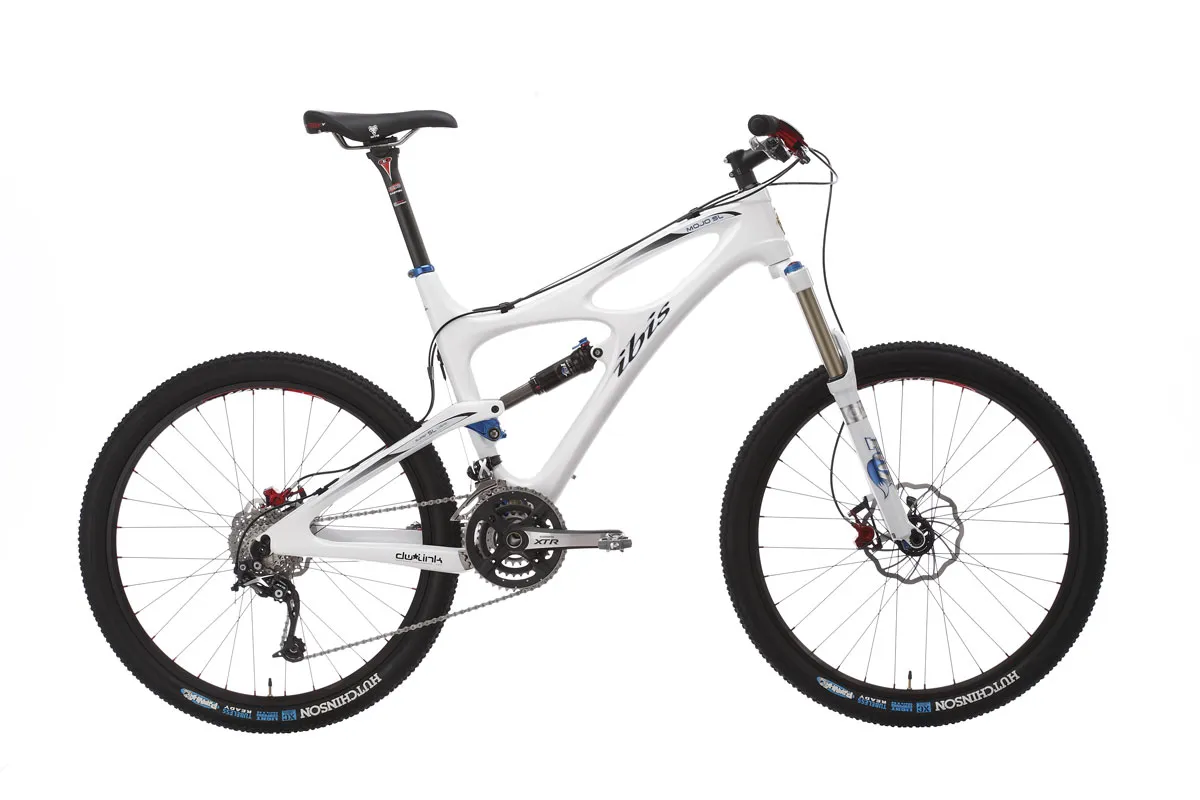
The 2010 Ibis Mojo, the company's 140mm-travel carbon trail bike
Tom: Cliched business methodologies aside, we listened to our instincts throughout the product development process. We're business people, riders and consumers ourselves.
We were doing our competitive analysis and looking at consumer trends like smart companies do, and our gut feeling led us, because we had to keep everything on the down-low because of Hans' non-compete.
Hans: June 2005 was the end of my non-compete.
Tom: When we started showing the bikes and getting feedback, it felt like we hit our target.
Hans: We didn't have a choice with a new company to make things viable. We rolled the dice in a unique way: instead of amortising the tooling and development costs over one year, we crossed our fingers and, after upwards of five times more development time than most companies, we chose to amortise costs over three to five years, helping us keep our retail prices down. Thankfully, it worked. The tooling and development costs of the Mojo have been paid off.
Tom: We were in the black our first year, thanks to media and consumer feedback.
Hans: Another part of the equation was that we all worked without pay for the first 18 months. We sold the product for a third less than normal, but everything has paid off as we enter our fifth year in business.
Tom: It certainly takes sacrifice to make a company get grounded.I realised early on that pay wasn't the primary motivator for coming on board with Ibis; I work just as hard here as I did for other companies, and there's a bit more at stake now, and more satisfaction at seeing things go right.
Hans: The best thing for me was reading about our customers' positive experiences on forums early on.
What prompted Ibis to partner with multiple world champion Brian Lopes?
Tom: Brian was riding with Steve Blick from Oakley, and approached us in late 2007 after GT didn't re-sign him. Blick has a Mojo, and Brian's mechanic Joe owns The Bike Company in Lake Forest, California, which is one of our top dealers. Brian started riding Bike Co's Ibis demo bikes, and word started spreading about him being seen testing our bikes.
There was certainly a guessing game going on with which bike Lopes would be racing with...
Tom: We didn't have much of a focus on sponsorship back then, but one of the things that intrigued me was answering the technical questions of 'just how strong can a long-travel full-suspension carbon bike be?' Having Brian on a Mojo answered that immediately.
Hans: With Brian, pictures tell the story.
Tom: Interacting with Brian was and is a fulfilling endeavour; his feedback is tremendous. He's about as famous as you can get within mountain bike racing. And he's a true-blue bike geek!
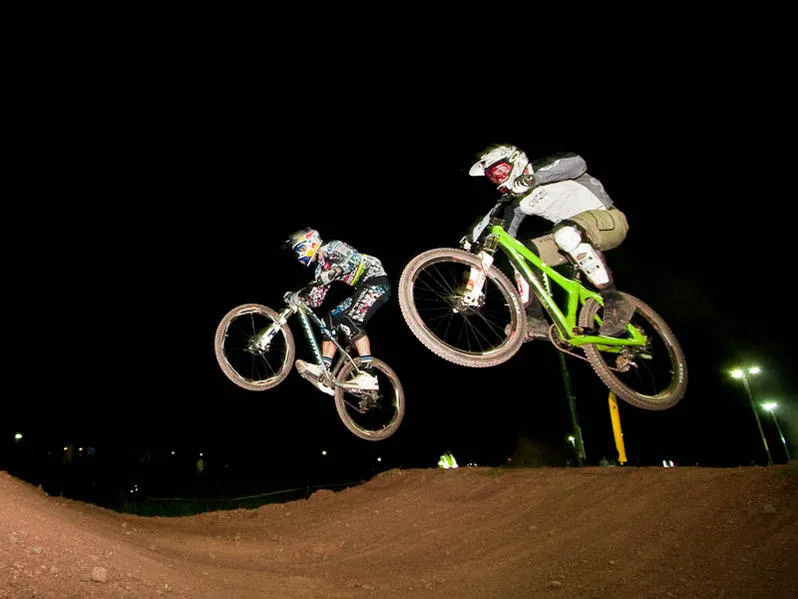
Brian Lopes (right) takes on Gee Atherton at last summer's BikeRadar Live
Hans: We needed an approachable athlete like Brian to represent Ibis. Considering his success and fame, he's a super-nice guy. He came on board in late winter 2007. He has solid sponsors. He's also the best test rider we could hope for. He gives us meticulous reports, constantly pushing us. He's noisy about subtle changes to the bikes. Our international distributors went nuts when we signed Brian.
Lopes and Armstrong are only 11 days apart in terms of age, and both seem to enjoy racing even at 38.
Tom: Brian doesn't show any signs of retiring.
Hans: Brian is skilled at a lot of things, and is always asking questions about how we run the business.

Flyin' Brian Lopes at Sea Otter 2008, months after signing with Ibis.
Would you consider making Lopes a lifetime advocate for Ibis?
Tom: I could see it if he's game!
What about seeing an Ibis on the trail under someone you don't know?
Tom: It's always a thrill – even seeing someone wear Ibis socks in a local restaurant! The Ibis community is pretty tight out there; people always seem to strike up a conversation with someone in an Ibis T-shirt.
Describe a typical day for you at Ibis. With 30 international distributors and only seven staff, it must be busy...
Tom: Mine is scattered; I follow up with international distributors and vendors first thing at home on email, then get into the office. I'm answering questions, taking orders on the phone, developing graphics with Hans, interacting with suppliers on new stuff coming up, analysing costs for build kits and complete bike costs; it's all over the map.
Some days I feel a sense of accomplishment; others I feel a bit behind. I've learned to take on the big things first, then whittle my way down the list. I always feel like I get something done.
Hans: My day starts like Tom's; after checking international emails, I get my kids ready for school. I get back on the email, get a ride in before the office. Once at the office, I do the bookkeeping, collaborate with Roxy and Tom on product development, help out on the phones when necessary and lend advice on general business functions.
Some days I don't feel very productive, other days I just jam through the day at a million miles an hour. My day is very linear; my work life has become integrated into my life as a whole.
Tom: Ibis don't do any advertising, so we keep up with direct consumer interaction and the forums.
Hans: I spend hours brainstorming about new things, almost obsessing over new projects before the breakthrough. That's when I introduce my ideas to the group.
Tom: Don't get us wrong: there's plenty of heavy lifting that goes with keeping Ibis afloat. This is still a job, but it's a job we love. It would be really hard to auger through the hard parts of this business if it wasn't for the crew we have. It's a fun group, and we don't like letting each other down.
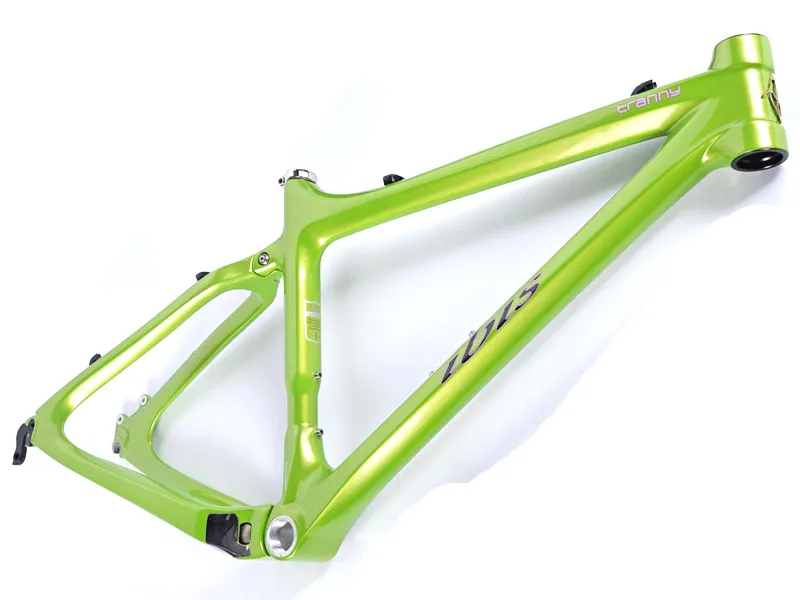
Ibis's new Tranny hardtail showcases the company's carbon fibre artistry
Ibis 2.0 is all about carbon fibre. Did it take much convincing to convert the Ibis purists, or did you find a new, untapped market?
Hans: If you know something to be true, then you're just deluding yourself to deny it and cater to people's preferences that are rooted in the past. So we knew that carbon fibre – theoretically – could be superior to steel and titanium. It turned out we could shave weight, stiffen the ride and get the look we were going for.
Whether or not people knew that when we first came out with the Mojo, or bought into it, we knew we had to go there. Some people sneered and walked away from us.
Tom: Before most people really understood what Ibis 2.0 was all about, one of the things that was attractive to me about the legacy of Ibis was what Scot had done in the past, including carbon, aluminium, tandems, trials bikes, his written manifesto on frame materials, and more.
I think folks had a selective memory when it came to the history of Ibis. For me, the brand represented a time period when I first got into mountain biking. Craftsmanship was a big deal back in the day, so Ibis 2.0 was about bringing a carbon artisanship to the brand.
What we've done wouldn't cut it on a 12-month product or model year cycle. Once people started riding the bikes, criticism quickly wore off. Scot had built a quirky company that didn't take itself too seriously; that's attractive because bikes are about having fun, first and foremost.
Hans: To do something with Ibis that was surprising and challenging was fulfilling. We don't take out advertisements trumping how great we are or our bikes are. We wanted to make a really hard charge for the top step; we wanted our customers to tell the world what they thought of our new bikes.
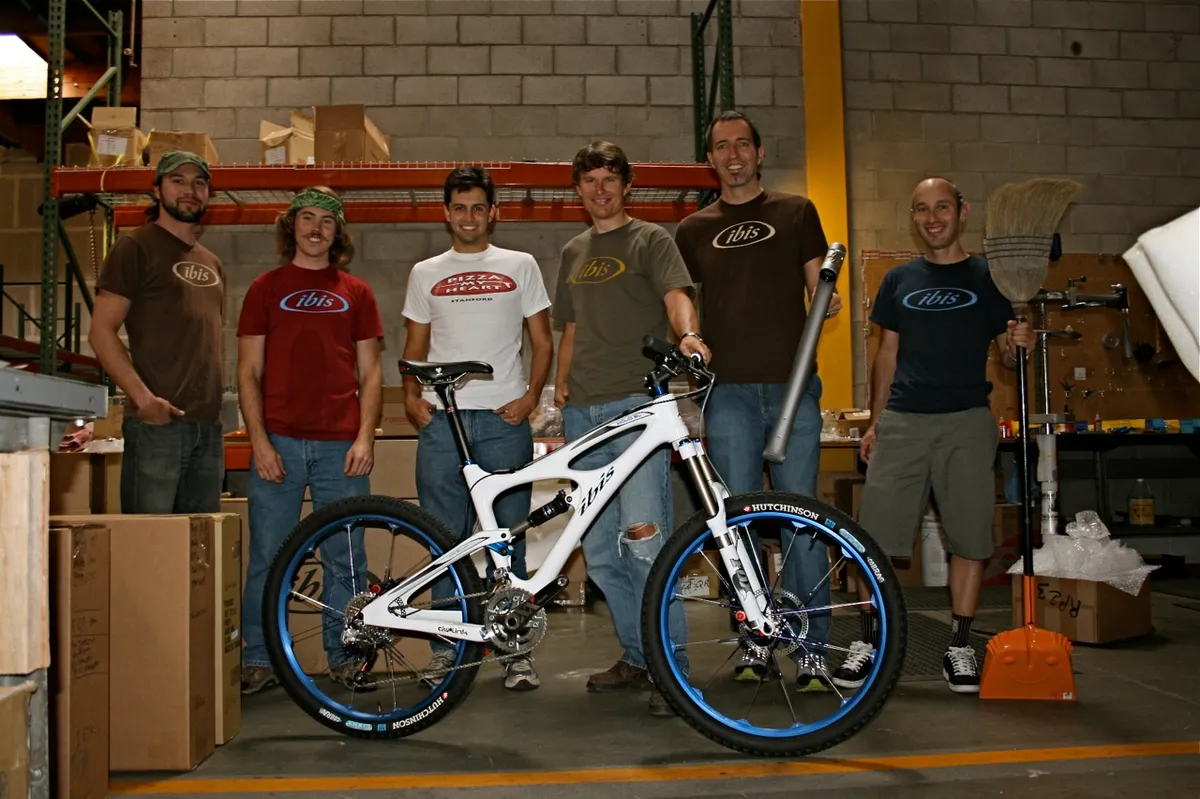
The Ibis crew in Santa Cruz, minus Scot and Roxy
Tom: We asked ourselves about what would attract people to Ibis 2.0, and we agreed to build a base of non-exclusivity. We wanted folks to feel comfortable buying and riding our bikes, and to feel included in on the process. We have fun, so others should as well.
Hans: Throwing rocks at competitors isn't healthy; our customers pick up on whatever vibe we have at Ibis. We keep everything coherent: inclusion, fairness, not taking ourselves too seriously, having fun... it all comes out in how we do business.
Tom: There's an impression that's created that some people in the bike industry are not approachable. Several people feel that way when they walk into a bike shop, unfortunately. When people contact Ibis, they're hearing from Scot, Hans or me.
Hans: We realise we need to give people the royal treatment, even when they don't deserve it! There are several shades of gray in the bike industry, and we need to keep things crystal-clear for our customers.
Describe a perfect day on the bike...
Tom: I'd have to give two answers, first the politically-correct one. Riding road bikes with my wife is always a treat, while doing events like Mountain Bike Oregon was another perfect day on the bike. Being with friends, pushing each other on the trails, then sitting around the campground telling war stories and sharing a beer by the river.
Hans: It's hard to rank good rides as one being better than the other. I enjoy riding by myself and riding hard, getting into a trance. I like to mix up my road rides on the road and dirt, with fireroads and technical sections. I process many things on my rides.
Another ideal day on the bike includes friends who trust each other when cornering; we're friends and competitors, so we'll chat, then put it totally in the red line on climbs or descents. If somebody gets a flat or hungry, we wait for each other. We like the camaraderie. I prefer to ride solo on the trail, mostly.
